What do you do if you come across a bear out on the trail? Mountain biking is perhaps the most dangerous of the forms of recreating in bear country. I think very few of us actually consider this, myself included until two years ago.
This article isn’t meant to instill fear or make you question whether to explore new places. In fact, the purpose is the opposite: to enlighten you about these awesome animals and how to coexist in their territory. I’ll also clear up some common myths, discuss preparations, and how to respond in an encounter.
IMPORTANT NOTE: Before you continue, understand that bears are complex and fascinating creatures. Because of this, specific behavior of any given bear at any given time can be unpredictable. However, by applying the knowledge that you’ll acquire in this article, you should increase your margin of safety in bear country.
What Are My Qualifications?
I haven’t always been the most “bear aware” person, but in working with and around wildlife as my career path, I’ve become rather enthusiastic on the topic.
Anchorage, Alaska, 2010:
My first “bear country” riding experience was quite uneducated. I never once thought about what I’d do in an encounter. I was living and working in Anchorage. My only mode of transportation was a bicycle loaned to me–no helmet, no repair tools, and definitely no bear spray or bells. I mostly rode the bike paths through greenbelts around town. I recall a news article about a wildlife camera catching a brown bear sow and three cubs walking down Rover’s Run, a trail that had just one month earlier been the location of a bear attack that a man survived.

In one of my last exploratory rides in Anchorage, I discovered some dirt trails winding through the trees. I hadn’t gone very far from town when I came across a trail to the right — a trail signed “Rover’s Run,” and a photo of the sow and cubs spotted just days ago. Oncoming trail users were riding, running, and walking with bells, dogs, and friends. I was by myself, no helmet, and no bear spray. I opted to turn back into town.
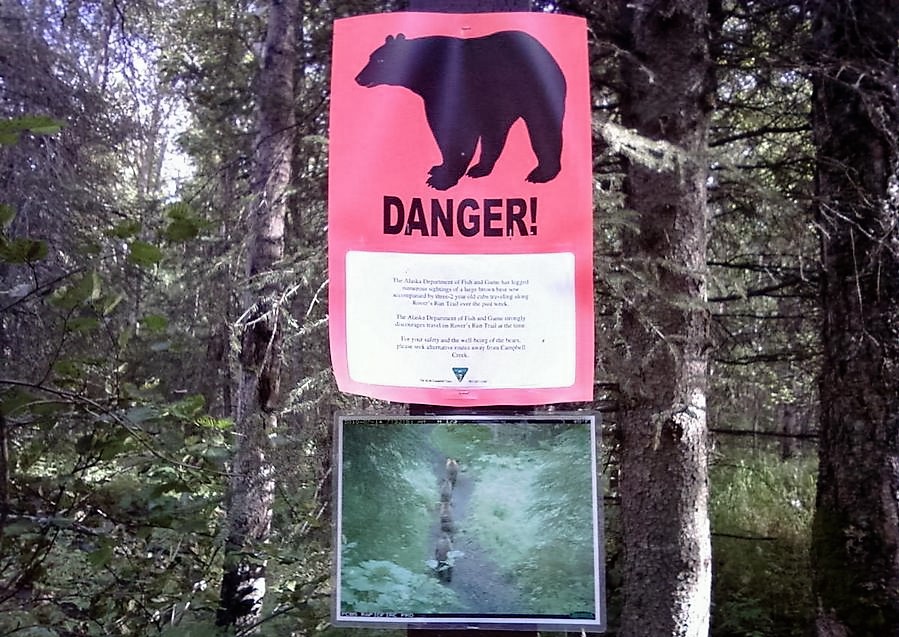
Driggs, Idaho, 2014:
I had ridden in bear country many times in Idaho prior, but I still had not considered what I would do in an encounter. It wasn’t until I lived in the Teton Valley/Jackson Hole area that I became aware. It may have partly been a result of the coinciding experience of working with captive bears that I initially moved here for, but I now take riding in bear country more seriously than I did three years ago.
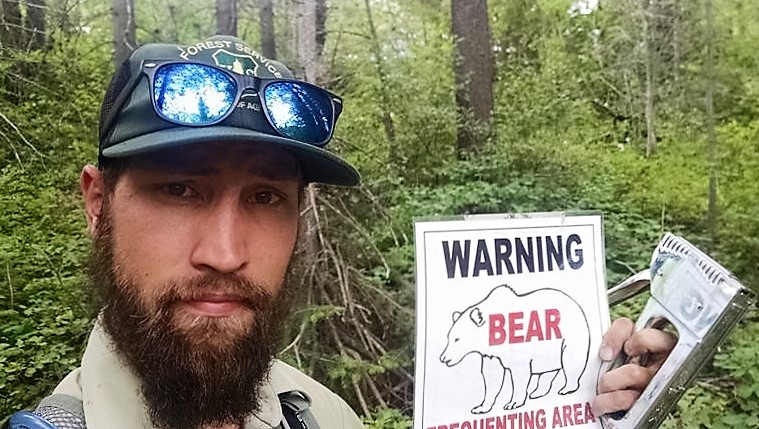
This past summer (2015), I not only biked, but lived and worked with the United States Forest Service in bear country. At the recreational area I worked at, I routinely talked to visitors about being safe in bear country. Additionally, I gave a pre-race talk about biking in bear country to the participants of Jay P’s Gravel Pursuit in Island Park, Idaho.
Understanding Lingo: Encounters Versus Conflicts
This is something you should know before continuing into the rest of this article. When I refer to an encounter, it means that you saw the bear and the bear likely saw you. In fact, make sure the bear sees you — I’ll get to that more in a bit.
A conflict is anything that goes beyond the encounter: A standoff. A charge. An attack.
Understanding Bears: Identification, Behavior, Habitats, and Seasons

Identification

Black and brown bears don’t always hold true to their descriptions — sometimes they can be a mix of a few colors. Brown bears can be blonde or even blackish, while black bears can be brown. Instead, look for the distinctive hump between a brown bear’s shoulder blades. Black bears have a higher rump. Tracks can be easily identified by shap, and the distance between the claw and foot. A black bear print (below) has a small gap between the claws and foot, while the space is greater for a brown bear print (above).

Behavior
Bears are not always the most aware animals. They’re curious. They get distracted. And they startle easily. So don’t assume that they’ll see or hear you first. Bears are also not territorial and thus, tolerate being around another. Because of this, they can also become habituated to human presence, though they still require a “buffer zone.” When you enter into that space, you’ve forced the bear to react in one of two ways: retreat or defend.
Habitat

Though brown and black bears habitats do cross over, black bears typically prefer wooded areas, while brown bears prefer meadows and tundra plains.
Seasons
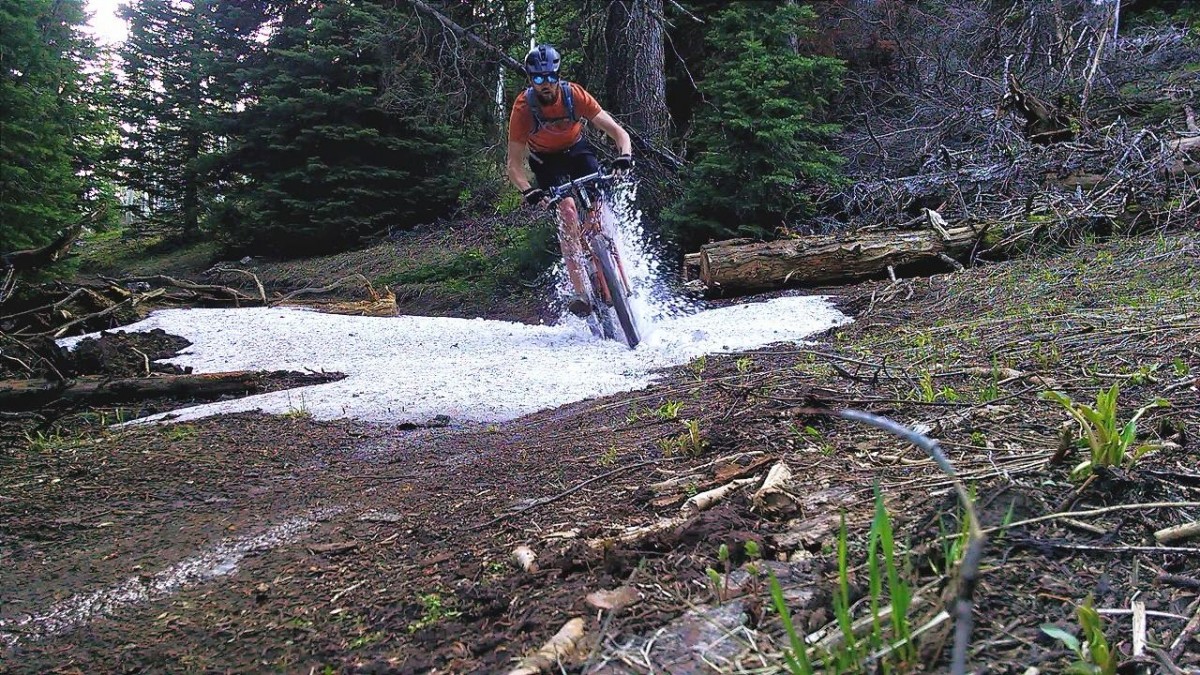
There are times of the year you want to be more on guard and cautious. To simplify it: food and babies. Anytime there are cubs involved, you are dealing with a much more serious encounter. Spring and fall, when bears are coming out of and going into hibernation, are both times to have a heightened awareness of food sources around you: carcasses, berry patches, etc. You don’t want a bear to feel like you’re trying to take their food. Fall time is when bears can be very desperate to get as many calories before going into hibernation.
Preparations
Stay Updated About Bear Activity

Social media can be extremely helpful in this. It’s fairly instant, and with a prevalent mountain biking community behind it, you can have reliable sources.
Another recommendation is checking in with the local Forest Service office and bike shops. Also take note of messages at the trailhead kiosks or signs at intersecting trails along your ride.

Mental Preparations
Physical preparations like having bear deterrent are important, of course, but mental preparations are just as important. Before you go out and ride, are you prepared for an encounter? In addition to bears, moose, coyotes, wolves, and cougars, to name a few, often share the same terrain we enjoy riding in. Do you know what to do if you should encounter an animal, and are you prepared to set aside all nervous and fearful responses to remain calm? I can tell you from my experience in working with animals, both wild and domestic, that they can sense whether you are nervous or calm. So premeditate and go over in your mind what you would do should you cross paths with a wild animal.
Know How to Use Bear Spray
Carrying bear spray isn’t enough. Living in Jackson Hole, we see a lot of tourists. They carry bear spray, but most have no idea how to use it. Furthermore, they make mistakes, like forgetting to take the zip tie off.
Here are some pointers:
- Once you’ve made yourself known to the bear and it doesn’t scamper off, get it out.
- Bear spray fires 25-35 feet–far enough to give you a barrier, but don’t spray too soon.
- Point down.
- The idea is to create a “wall” between you and the bear. And it works. No need for accuracy.
- Once sprayed, back away slowly and go in the opposite direction of the bear
A Little More About Bear Spray
Bear spray is a deterrent that combines three things: the burning sensation, a pressurized sound, and a “smoke screen” effect — the color is usually orange.
These three things combined is a sensation that a bear has never experienced before. And even if it has, it hasn’t been often. It’s going to be confusing and painful every time, immediately taking its mind off of you and onto the question, “What the [expletive] just happened?!”
Pro Tip: Weigh It When You Buy It
Bear spray canisters have an expiration date. It’s not the actual bear spray itself that expires, but rather the o-ring (seal). This is what can’t be guaranteed, and cans will eventually slowly seep, losing pressure.
However, if you weigh your bear spray can immediately after purchasing it, then you can know whether it has lost any pressure past the expiration.
While Riding
Situational Awareness

I preach situational awareness all the time. And much of what I’ve already said falls under this topic. This is the number one, most effective thing you can do, and it takes place long before any encounter. Where are you at? Are you riding some gravel road along the border of Yellowstone? If so, you’re in the heart of bear country. When are you riding? Dawn and dusk are the most common times for a lot of wildlife to come out. That said, I’ve encountered a bear in the middle of the afternoon. What do you see? Paw prints? Bear scat? How fresh are they?

What do you smell? Berries? A dead animal? The smell of that moose carcass I came across was incredibly distinct. I immediately stopped and looked around. I did make a mistake — I investigated the smell. I walked right to the carcass. Should a bear have been nearby, it would have appeared as though I was trying to take its food. So please learn from my mistake. A rotting carcass smells like a rotting carcass — no need for further investigation. Stop. Check out your surroundings. And then get out of there.

Know Your Comfort Level
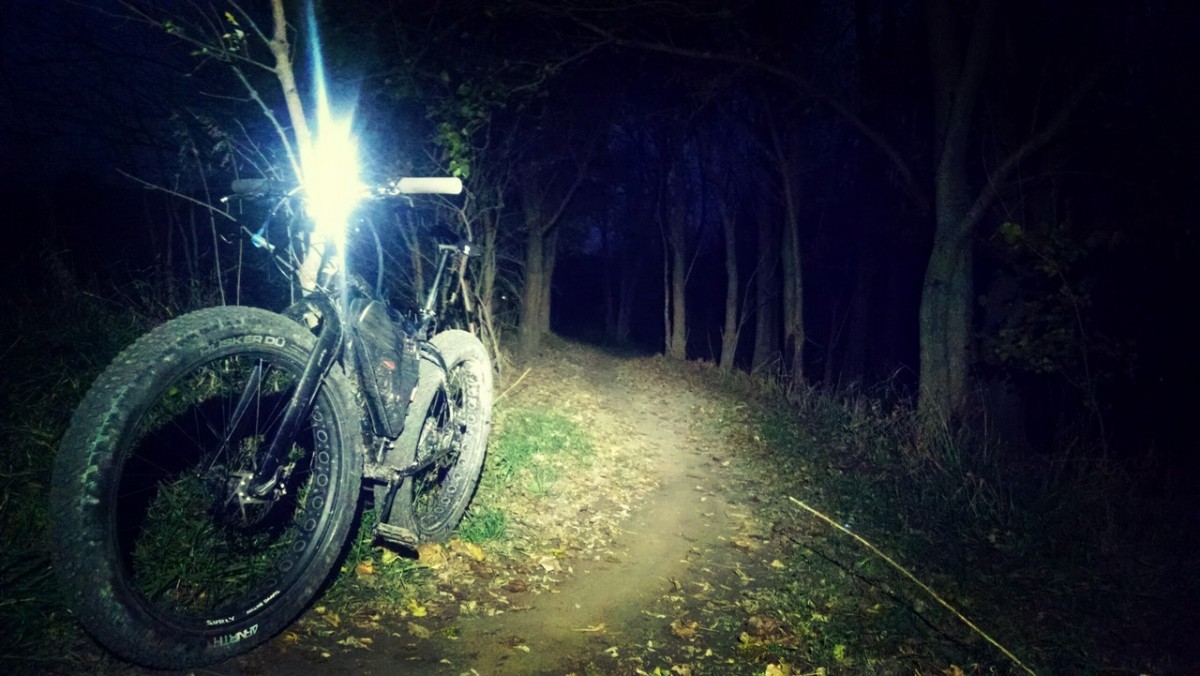
This goes without saying too much: trust your instincts. My comfort level since riding in Alaska has changed a lot. Initially, I was quite naive. Then I became more aware. Then I became prepared.
Bear Spray Must Be Accessible
“Hey, bear. Hold on while I pull out the bear spray,” doesn’t really work. Knowing how to use it won’t do you any good if it’s stowed away in your pack. There are a lot of methods people use. Some of these are braze-on frame mounts, handlebar mounts, and a product called a BearCozy, shaped to fit into your water bottle cage.
But these all pose one issue: what if you’re separated from your bike? I can just picture myself getting into the situation where I see the bear, get startled and wreck… my bike going off a steep slope, while I remain on the trail. There goes my bear spray. There have been cases where mountain bikers have spooked a bear and been swatted off their bikes.
Or you could have just wandered away from your bike to take in the scene and have some lunch, like the photo of me below.

You could strap the bear spray to your hip belt or chest strap, but I’ve super-manned over the bars and landed on my chest. I’d hate to land on a pressurized can of bear spray — ouch. I also didn’t like how much the canister moved around when attached to a backpack hip belt. Both of these also require you to wear a pack.

Personally, I use the ScatBelt (shown above). It sits below your pack, securely holds the bear spray, and allows quick access. It’s also versatile and can be used for other outdoor activities, while costing the same or less than other alternatives.
Avoid The Element Of Surprise: Make Noise

Vocal noise is best: talking loudly, singing songs, etc. But whatever you prefer — bells, whistles, shouting — it’s crucial that you don’t surprise a bear. Riding with someone isn’t crucial, but it does help keep conversation and noise going. I’ve found that trees soak up sound, so keep in mind that any noise you’re making isn’t going that far. I most often resort to hollering or making loud, obnoxious noises while descending fast trails in the dark. Bear bells are often avoided because they can be annoying, but the Mountain Bike Bell from Timber can be turned on and off.
Respect Trail Closures and Warnings
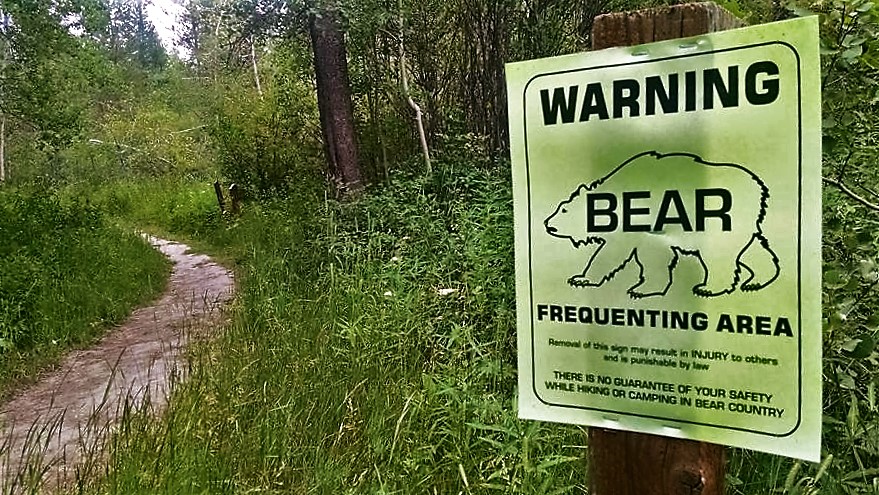
I think this is more important in representing mountain bikers as a whole, but this is also for your safety. If a trail is closed for fall foraging (for bears), cubs, or heavy bear activity, you really don’t want to take the chance of a conflict.
What Do You Do If You Cross a Bear?

Don’t Ride Away!
We’ve already covered this, but don’t run/ride away. If the bear has already seen you before you’ve stopped, you’ve already looked like you were “running away” from it. Stop and let him know you’re human.
Make Yourself Known
I don’t know if you know this, but deer don’t talk. So when you see a bear, say something. Anything. Believe me, they won’t judge or laugh. More than likely they will scamper off when they realize you talk and use strange sounds.
Don’t Scare It
By scare, I mean surprise. Bears aren’t the most aware animals and could be napping or just meandering through the brush, foraging. By not making noise, you’re inevitably going to surprise it. Other “scary” things to a bear would be things being thrown at it, which would evoke a less than desirable response.
Slowly Create a Buffer
Should you come upon a bear too close, back away slowly while continuing to face the bear. Doing so quickly or turning your back will communicate to the bear that you’re running, thus, you’re prey.
Never Make Eye Contact
Having worked with bears, I’ve witnessed this first hand among bears in captivity. In nature, bears tolerate the presence of each other in their territory, but don’t make eye contact, except to challenge one another. Eye contact = “challenge” in bear speak. Face the bear, but don’t look into its eyes.
Stand Your Ground If They Charge — Bears Often Bluff
If the bear continues to pursue you, stay put. Pull out the bear spray and be ready. Regardless if you have bear spray or not, if the bear charges, it will likely bluff at the last minute. Resist the urge to run.
When It’s a Sow and Cubs
The best thing you can do in this situation is to communicate that you aren’t a threat. Brown and black bears are a bit different in this case. Black bears will send their cubs up a tree, while brown bears will be more aggressive. The sow could charge, but stand your ground as she’ll probably bluff. On the rare occasion that a black bear sow charges, they’re more likely to attack.
Debunking Common Bear Myths
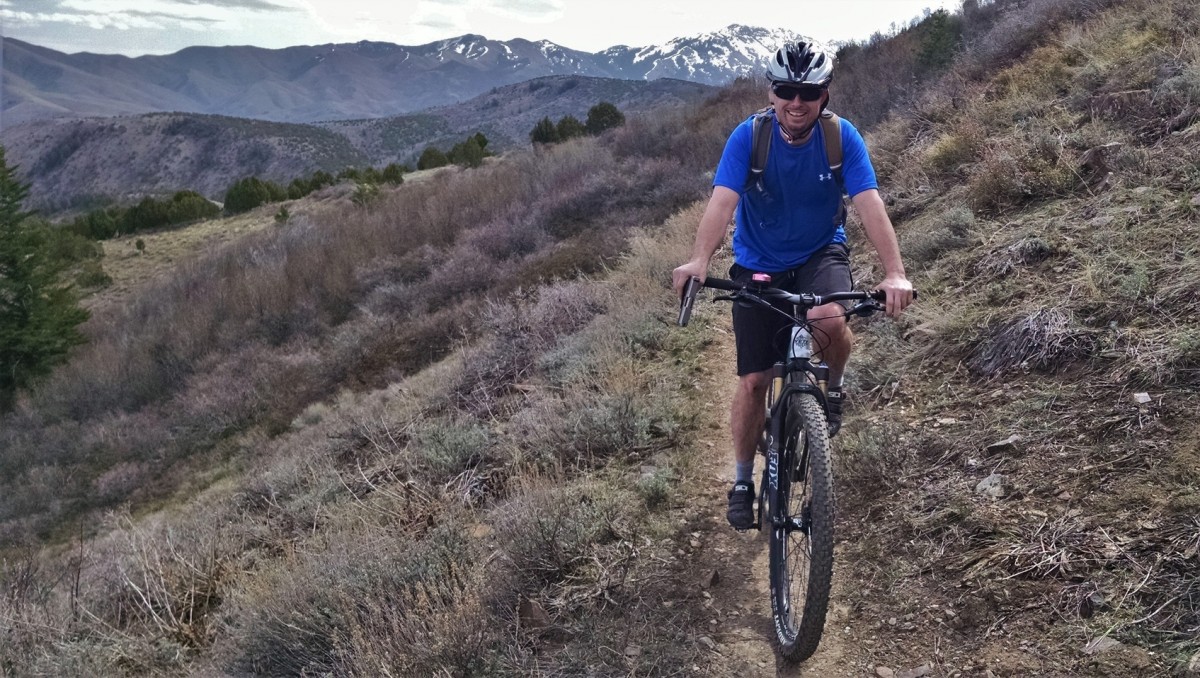
All you have to do is outrun (or outride) your friend!
It takes two to tango… or in this case, tackle. Bears don’t use logic. They use instinct. And what does a deer or any other prey do? It runs. If you run, you immediately instigate the bear’s response to chase. Don’t run. Instead, stand your ground, even if the bear charges. Think you can outride or outrun a bear? Can you run faster than 30-40 miles per hour?
Bears can’t run downhill.
Yes, they can. They can run just as fast downhill as they can uphill and across hills.
Grizzlies can’t climb trees.
The true sentence is they can’t climb as well as black bears. But they can climb, so trees are not a reliable escape method.
A standing bear is about to charge.
Actually, a standing bear is just curious. Have you ever seen a bear walk on two legs? They look like the most awkward, uncoordinated creature on the planet. When they drop to all fours and start walking your direction is when you want to be ready to pull out the bear spray.
Play dead.
In the event that you encounter a mother grizzly with cubs, playing dead will work. That is about the extent of the truth to this myth, though.
If the bear attacks offensively, especially if it’s a black bear, fight and do everything in your power to defend yourself.
Throw stuff and fight back.
This is really only a last chance scenario if the bear is attacking you. Throwing stuff and acting violent prior is only give the bear a reason to attack. This is also why using firearms in defense isn’t recommended.
A firearm is just as effective as bear spray.
Nope–and here’s why. In “protecting” yourself using a firearm, you have two options. To fire it in the air, or at an object near the bear, such as a tree. The second option is to shoot the bear. But think about this for a second. Let’s say you have a thousand pound grizzly charging. You fire at it, hitting it square in the head. First off, kudos for having amazing aim under tremendous pressure! Will this kill the bear? Perhaps. Bears’ skulls are pretty thick, though.
Now let’s talk adrenaline. Think about what humans have been able to do under adrenaline, like a parent lifting a car off their child. Now multiply that times 1,000 pounds. Bullets can kill a bear, yes. But there are also a large amount of cases where the bear has been found dead on top of the human. So, even if you have perfect aim, it’s still not guaranteed to stop the bear before it gets to you.
Bear spray, however, has proven to be 98% effective during a study done in Alaska — I like those odds.
“It’s just a black bear.”
Sharp teeth. Big paws. 400 pounds. Yeah, I wouldn’t worry about them either.
It’s a common thought that you don’t have to worry as much about black bears. In many conversations with people, I’ve noticed black bears are often overlooked as a danger. That said, black bears usually feel less threatened due to their ability to quickly climb up a tree.
Distract the bear by throwing food.
I was once asked, “Even as a last resort to ‘distract’ them, could you do this?”
And then what? What are you going to do when the bear gets the food and then comes after you? You’re only going to encourage his behavior. The food, to him, is a reward. And remember that bit about not running?
You don’t need to worry about winter — they’re hibernating.
It’s certainly not a prime time, but there have been cases reported where people have stumbled upon a bear’s den. If you’re intent on wandering far into the winter backcountry, I recommend you study the terrain and learn a bit about the territory. Bear spray could save your life. To add some perspective, a climber recently survived a Grizzly bear attack this past December:
“Kim Titchener, a Canmore human/wildlife conflict specialist, says it serves as a reminder that bears are around, even in winter.
‘I don’t think people realize that you can have a bear encounter even in winter, and they end up leaving things like bear spray at home,’ said Titchener.”
Conclusion

Like I said in the beginning, you don’t need to avoid riding in bear country. If you got that message from this article, then I didn’t do a good enough job. Bear encounters are rare, but in the case that one occurs, being prepared makes all the difference. Remember: most bears are going to be even more afraid of you. If we’re being responsible, bears won’t even want to be around us. So go ride and explore new places. Ride responsibly and respectfully of wildlife, and you shouldn’t have any problems!




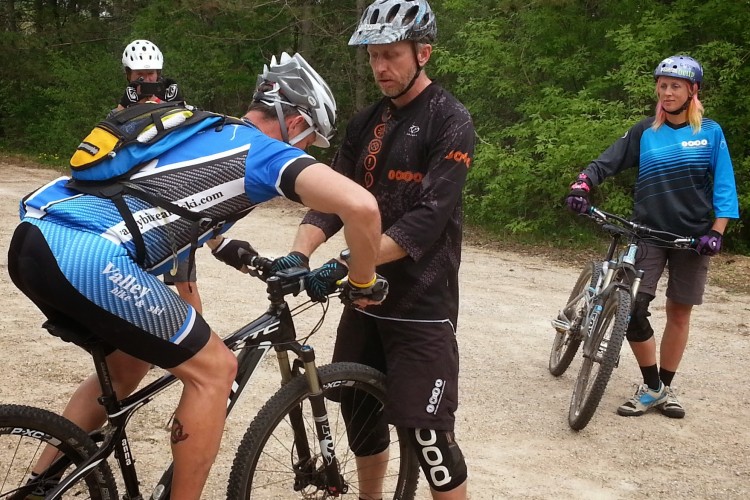

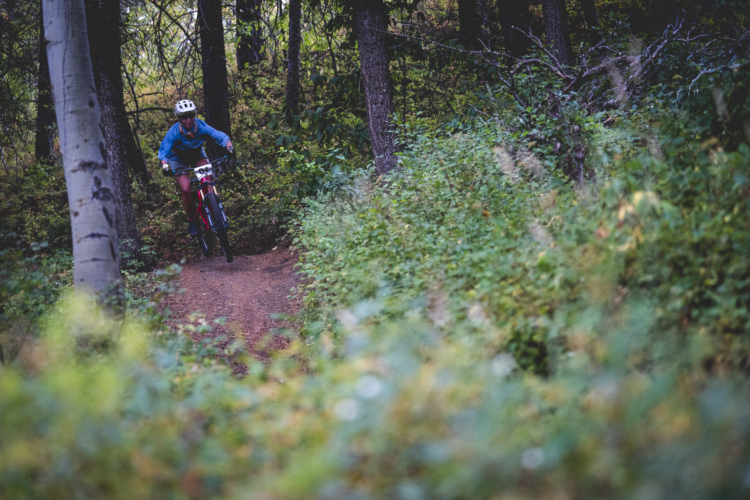

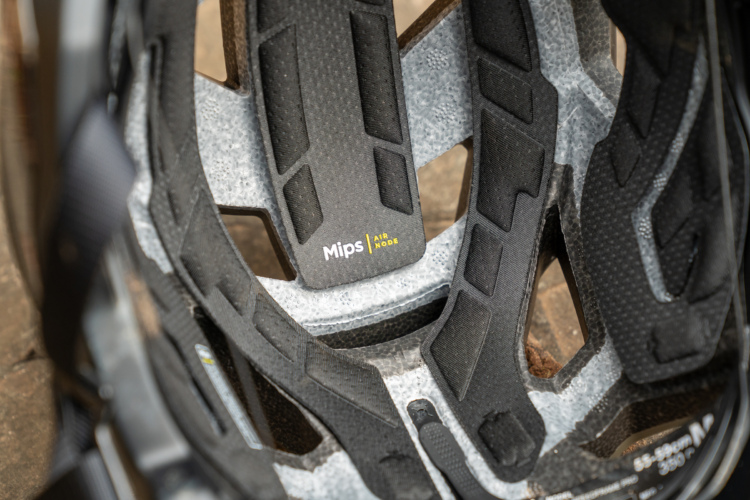
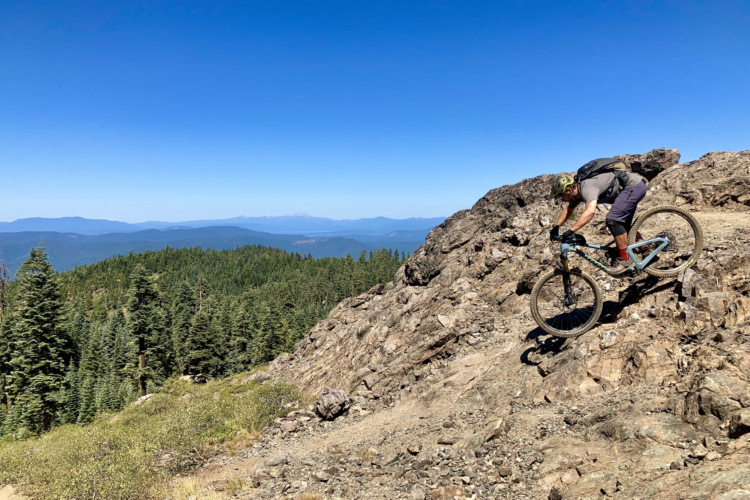

6 Comments
Nov 29, 2017
Feb 26, 2016
Feb 18, 2018
I really like the Rigid bike ????
I’m assuming when you talk about brown bears you are referring to Grizzly Bears although I know there are some differences between the two.
Aug 31, 2018
As far as brown and grizzlies go. All grizzly bears are brown bears, but not all brown bears are grizzlies. Brown bears live all throughout the world. The grizzly bear is a species which lives in a certain region of North America.
Feb 19, 2018
I ride in bear country most of the time. I have bear spray that is accessible and a bell on the bar that is ringing all the time I am moving. The bell alerted a mature black bear last summer before I saw it. It bolted from the undergrowth in the opposite direction.
When I consider the amount of encounters I have had it is quite high. I only started using a bell and spray after an encounter with a young grizzly. Had mum been with the juvenile I would have in a very, very difficult situation.
Aside from bears that are moose, cougars and birds of prey to consider. I had a hawk dive bomb me in Fish Creek Park, in Calgary some years back so I never take them for granted.
Feb 18, 2018